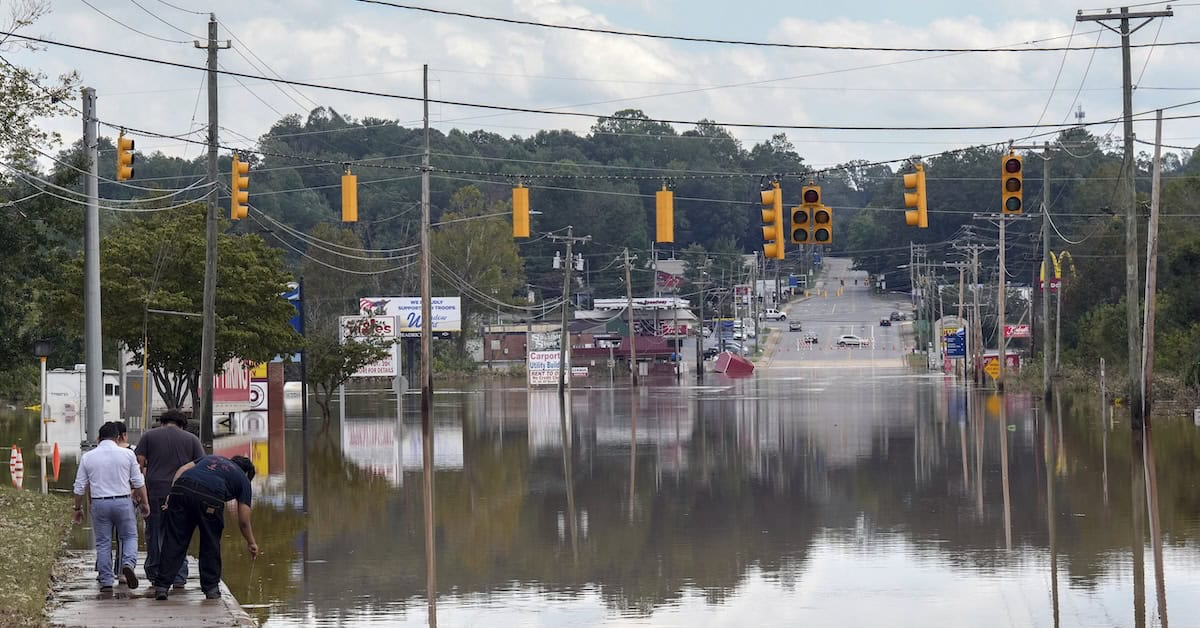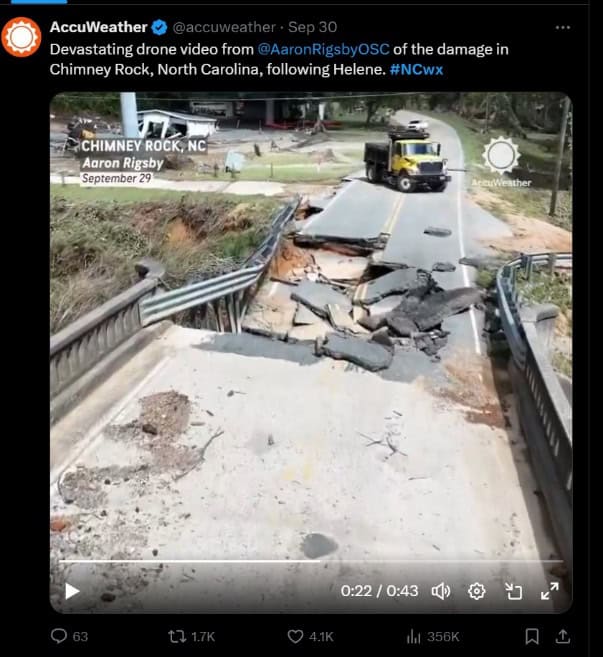by Peter Breggin MD & Ginger Breggin, America Outloud:

Hurricane Helene churned up the Gulf, veered right, and slammed into the coastline of Florida in the crook of the state where the Florida Panhandle wraps around the Gulf. Forecasters, both official and freelance, predicted the worst for Florida, with storm surges of up to 20 feet. Florida knows how to handle hurricanes, and while damage has been devastating in places, there was little loss of life.
TRUTH LIVES on at https://sgtreport.tv/
After hitting land, Helene crawled up Florida and swung left, creeping up along the spine of the Appalachian Mountains, dropping torrential rains into the lakes, reservoirs, rivers, and streams of the Tennessee Valley and nearby regions. The mountain communities in North Carolina and Tennessee were already isolated from each other, often with only one or two roads connecting them to the outside world. These little towns were hit the worst, with whole communities being literally wiped from the map. At least 160 people have died as a result of the storm, with more than 40 dead in Buncombe County alone, the seat of badly hit Asheville, North Carolina, a well-known mountain vacation destination.
The geography of the area is steep; mountains and valleys with narrow roads and bridges connecting the tiny communities to the larger world. So much rain came that some dams were over-topping, threatening the structures. Earth became so waterlogged that mudslides broke free from the mountains, flashing through some of the communities. Raging water from rivers and streams pushed whole trees, trucks, cars, semi-trailers, and the debris from destroyed homes downstream. Debris that wasn’t moved along has piled up into debris mountains, blocking roads, train tracks, and filling waterways. All that debris and the forces of water have undermined and torn up roads, demolished bridges, and damaged water management systems. The Tennessee Valley Authority reports that they have 49 dams to manage the lakes and rivers and the reservoir system. That is a lot of infrastructure to inspect, protect, and restore.
Because towns are cut off, there has not even been a full rescue and recovery, let alone an inventory of the dead and missing, as well as property damage. One video, “Everything’s Gone,” shows a towering wave of mud rushing down a hill and sweeping past the person filming as it pours down the mountainside. “My car is gone…” “I’m OK, it’s OK.”
I saw a short video on X by a real estate agent with 30 years in the business who is collecting supplies and delivering them to nearby affected communities. Leigh Brown indicated that in addition to the flooding, debris, and devastation, there is now widespread looting. She said she was advised by a sheriff’s deputy that anyone coming into the region to assist needed to be armed and “safety off.” She is helping to organize donations for nearby communities. “You are not forgotten by the rest of North Carolina,” she said, and “this ain’t about your granite countertops,” you’all, it is about the culture and the generational homes of this region. “Chimney Rock is gone, Swannanoa, gone, Montreat, gone. Other towns, damaged beyond repair.”
Read More @ AmericaOutloud.news




